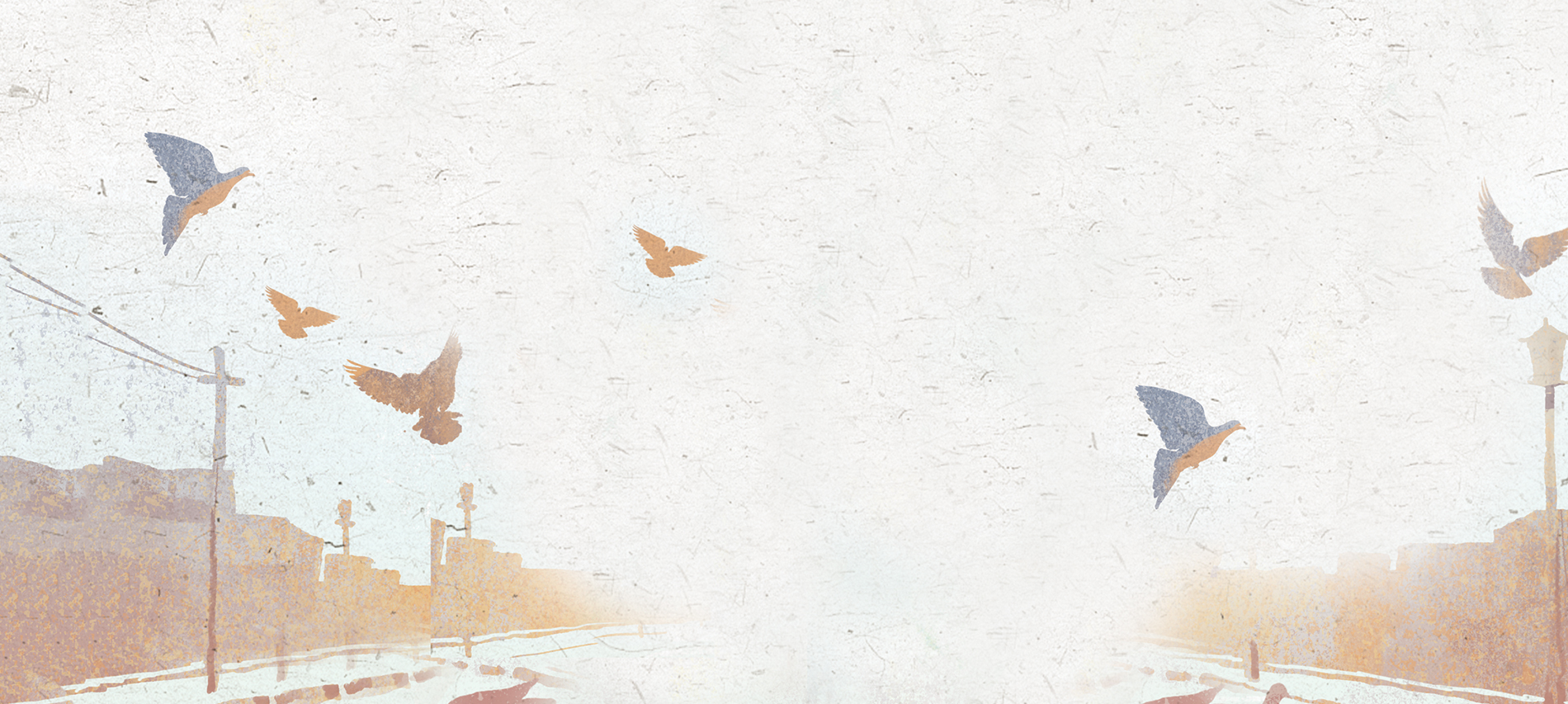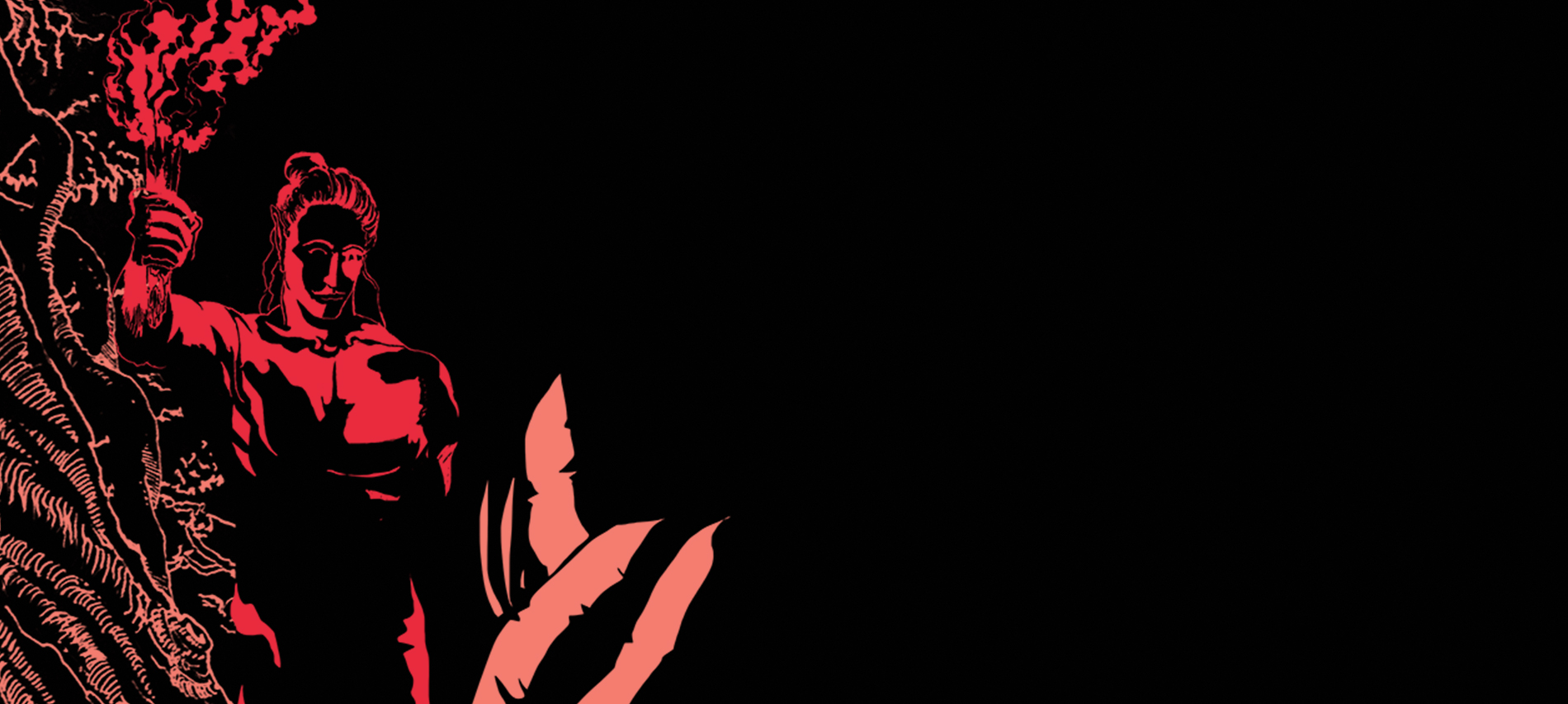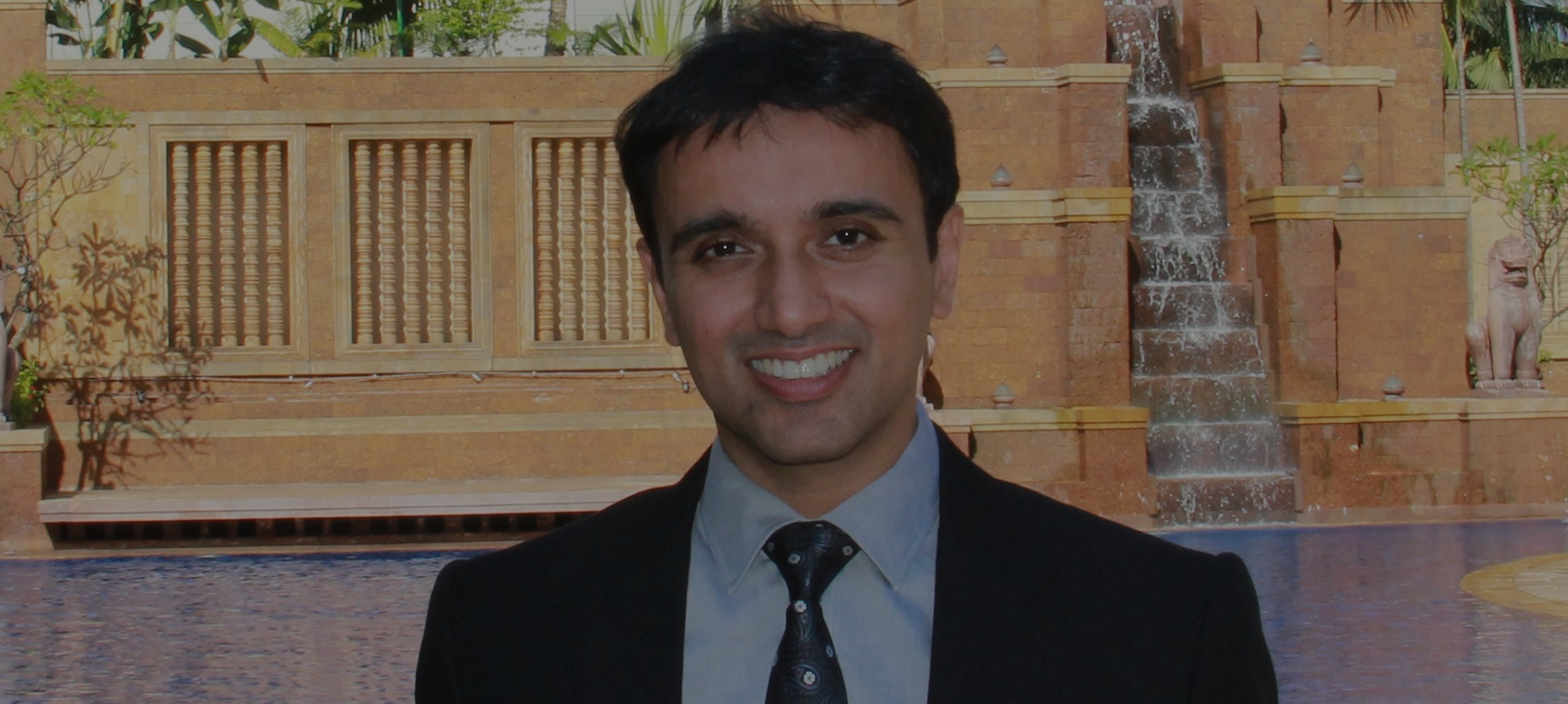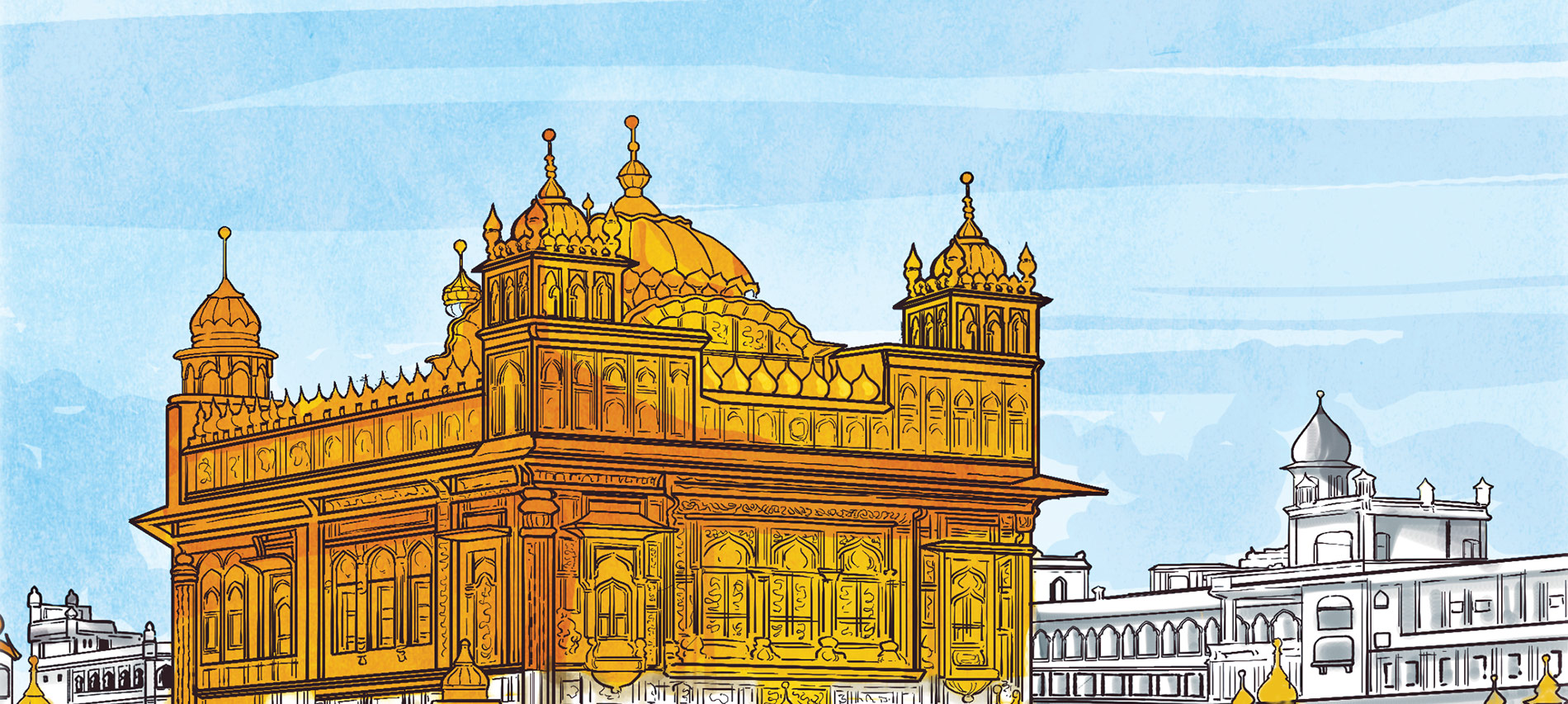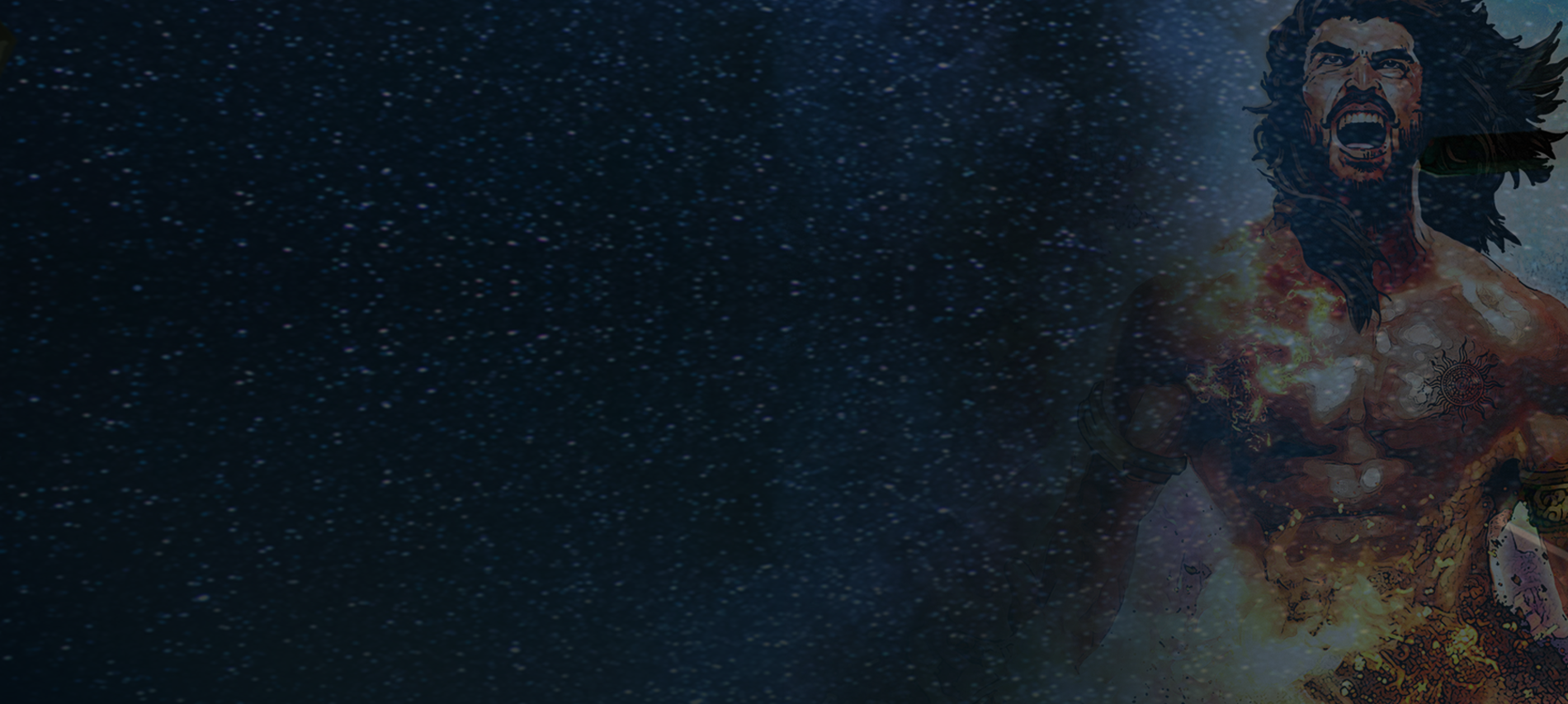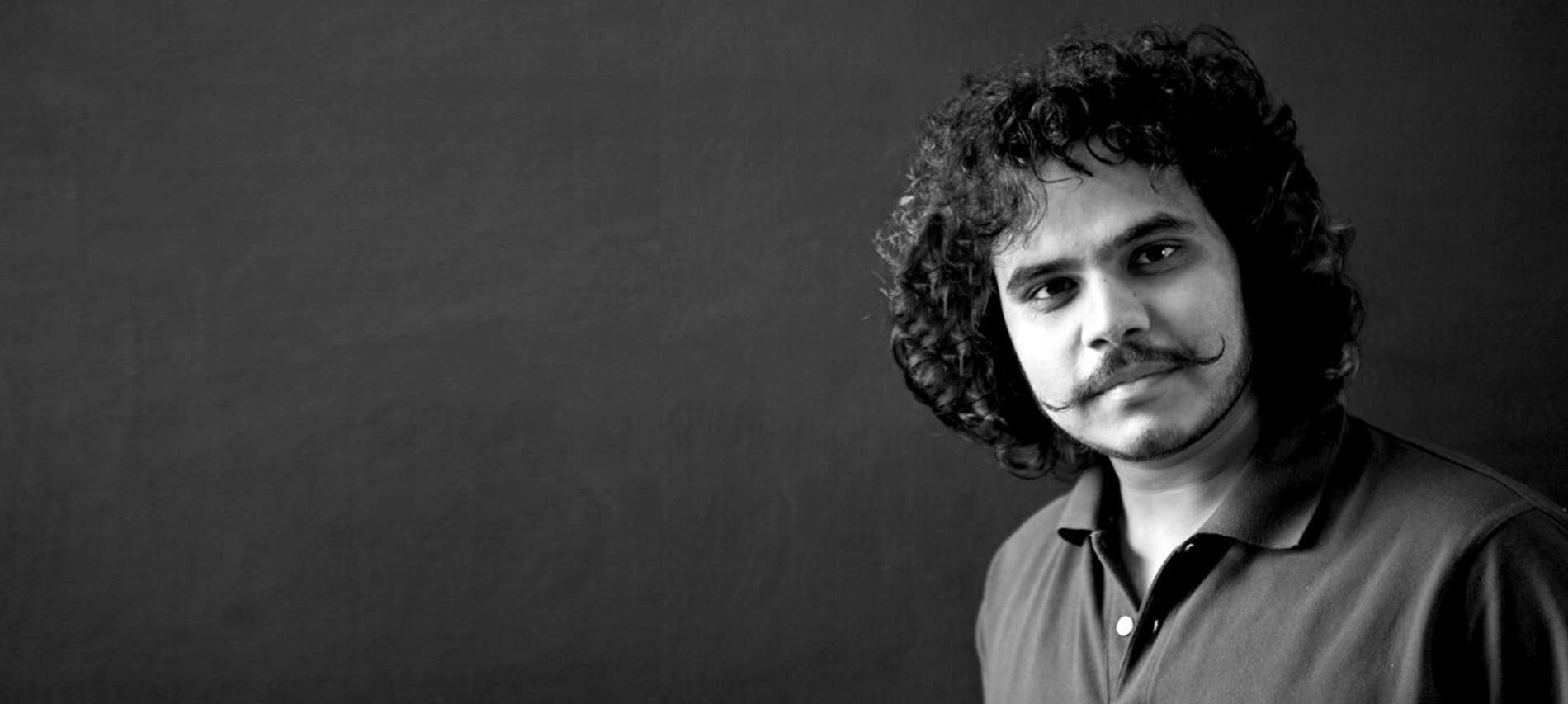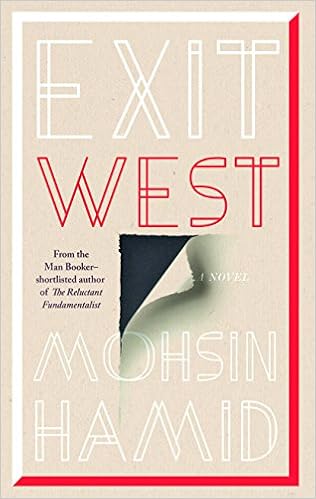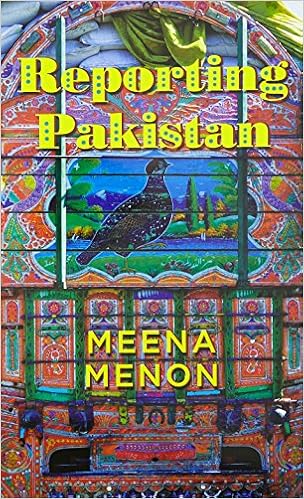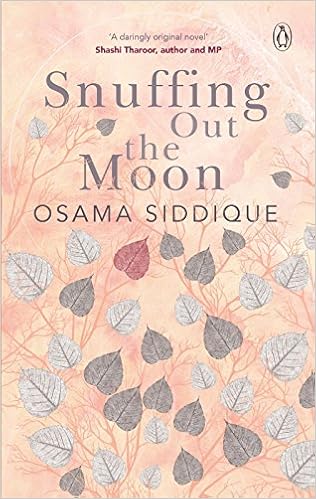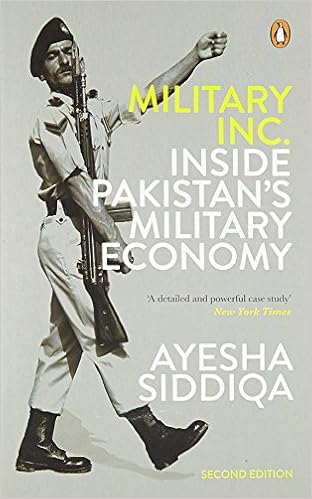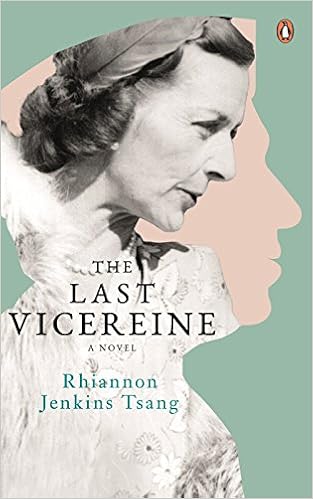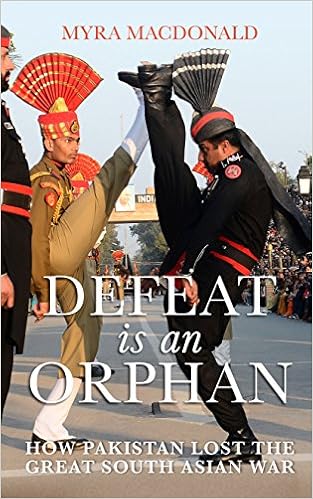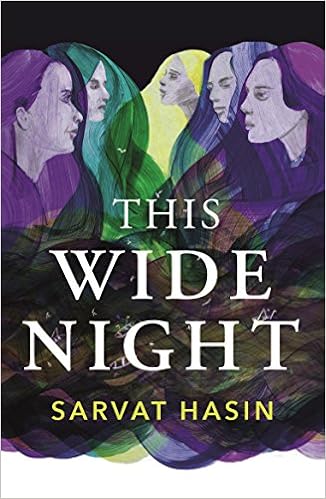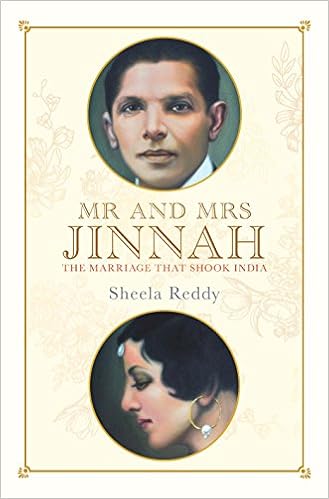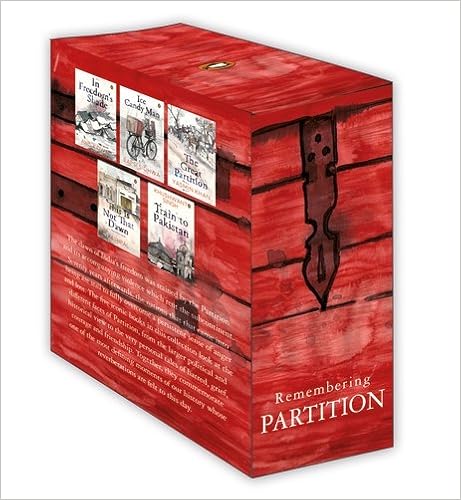Ruskin Bond ran away from his prison-like boarding school in the hills to go and live with his father in Delhi. In ‘Looking for the Rainbows’, Ruskin Bond regales in his past and revisits the beautiful days he spent with his father going to the cinema, singing songs, reading books and taking long walks.
Here’s a short glimpse from ‘Looking for the Rainbow’, holding Ruskin’s hand and going back to where it all started.
An entire year without school! What more could an eight-year-old boy ask for? Not what his parents would ask for, certainly; but after serving a two-year sentence in a fun-less convent school in the hills, I was more than happy to take a long, enforced break from gloomy classrooms, smelly dormitories, an overcrowded playing field and a diet of cabbage soup and boiled meat.
That was the sort of school I’d escaped from— or rather, been plucked out of by my father in the middle of the summer term.
It was 1942, the middle of World War II, and my parents too had been at war with each other. They had, in fact, separated, and my mother was about to marry again. My father was serving in the Royal Air Force, and was living on his own in an Air Force hutment in New Delhi, working in the Codes and Cyphers section at Air Headquarters. I was particularly close to my father, and I insisted on going to live with him rather than to a new and unknown home.
My mother took me out of the hill school near her home in Dehradun and put me on the train to Delhi.
My father was on the station platform in Delhi, looking very smart in his RAF uniform. He hugged me, took me by the hand and led me to the station restaurant, where we had a healthy breakfast. Even a railway breakfast was better than the fare we had at school!
We were joined by my uncle Fred, who was then the station superintendent at the Old Delhi station. He had a bungalow nearby. But my father’s quarters, or hutments as they were called, were at the other end of Delhi, on Humayun Road, where the new capital of India had been created.
We must remember that up until then, Calcutta had been the capital of British-ruled India, and Simla, the summer capital. Now the capital was New Delhi, still very new and still coming up, and Simla, of course, was much nearer.
The hutment was a bit of a surprise. It consisted of two brick-walled rooms, a kitchen and a bathroom. And it was in the middle of nowhere.
Humayun Road, in those far-off days, was simply a lane running through a scrub forest. It had been cleared in places so that these wartime hutments could come up. But there were more jackals than people in the area. And snakes too.
As Ruskin prepared to spend some of the most wonderful days of his life with his father in ‘Looking for the Rainbow’, let’s gear up for the next part in the enchanting series where Ruskin’s life is about to take a drastic turn! Pre-order your copy of ‘Till the Clouds Roll by’ today!

Tag: Penguin India
When Young Chintamani Woke Up in a Place He Had Only Read About: ‘Lost in Time: Ghatotkacha and the Game of Illusions’ — An Excerpt
Chintamani Dev Gupta is on a trip to a bird camp near Lake Sat Tal! Away from the drudgery of urban life in Gurgaon, Chintamani finds himself near the cool, blue water of the lake and dives in for a swim. But when he emerges out of it, things look different. Where is he?
Find out with Namita Gokhale’s beautiful new novel for your little one, ‘Lost in Time: Ghatotkacha and the Game of Illusions’.
Here’s an excerpt from the book telling you where it all started.
A figure was approaching. He, she, it, was holding a burning branch of wood and breathing deeply. I had slouched down, suddenly tired and drowsy, in a bed of dry leaves. An enormous face came into view a long way above me. I wondered if I was dreaming, but the warmth from the flaming torch seeped into my bones, as did the long, careful breaths of this giant. I sat up bolt upright.
He was sniffing me, and I could smell him too. The tang of leaves and the forest, with a whiff of animal and the scent of human.
‘Who are you?’ he asked in a language I didn’t understand. And yet, strangely enough, I did. Was this telepathy?
‘And who are you?!’ I asked back, the question was put forward in sheer panic mixed with some cunning. I was still trying to take in the awesome size of this Godzilla, and figured my question might help establish a bond with this primeval creature. But then, how would he understand my question, which probably sounded more like a squeal?
‘I am Ghatotkacha,’ he replied. ‘I am the rakshasa Ghatotkacha, born of the lord Bhimasena and the lady Hidimbi. I rule over hill and vale, forest and stream to protect the spirit of the forest and all who live in it.’
I understood this too, through some sort of teleprompter that seemed to have lodged itself somewhere in the left lobe of my brain like a Google Translate implant.
‘I am Chintamani Dev Gupta,’ I replied tentatively. But it wasn’t me speaking at all, perhaps some sort of decoder that seemed to be picking up on signals from my brain. Take control, I told myself, take control, or you will lose this mind game.
‘I am speaking Paisachi, but I am fluent in Prakrit and Sanskrit too,’ the giant replied.
He had huge red eyes that were lit up by the burning torch he held in his hand. But they were kind eyes . . . there was not even a hint of cruelty in them.
‘And don’t worry, I am not trying to take control of your mind!’
Weird, weirder, weirdest. He could actually read my mind! Holy cow! This situation was just impossible. I pinched myself even harder this time, so that I might now wake up from this fast-accelerating nightmare.
It only gets “weird, weirder, weirdest” from here on! You wouldn’t want to miss it! Grab your copy and dive right into the charming world of Ghatotkacha!

The Lehman Collapse Days, An Excerpt ‘From Lehman to Demonetization’
Tamal Bandyopadhyay is one of the most respected business journalists in India. He has had a ringside view of the major changes that came through in the Indian finance and banking sector in the last two decades. In his book ‘From Lehman to Demonetization’ he tells the epic story of banking in India in the last decade. The book features essays and interviews with stalwarts from the sector like Raghuram Rajan, Arundhati Bhattacharya, and many others.
Here is an excerpt from the book.
On the day US investment bank Lehman Brothers Holdings Inc. filed for bankruptcy, the chief executive officers of six large commercial banks assembled at a south Mumbai hotel to debate a topic close to every foreign banker’s heart: ‘Should India open up the financial sector?’ Y.V. Reddy, former RBI governor, widely known for his views against the opening up of the sector, had retired just ten days before the collapse.
His successor, D. Subbarao, former finance secretary, was to be the chief guest at the conference but he excused himself because he could not have expressed his views on the subject in his new role as RBI governor. Owing to the newsflash that morning, the mood at the conference was sombre and even the traditionally aggressive foreign bankers, who always blame the Indian banking regulator for keeping the doors closed, were restrained in their arguments. The beer tasted flat that evening, the food stale, and a few panellists, including ICICI Bank Ltd’s then managing director and CEO, K.V. Kamath, did not wait for the dinner and left immediately after the discussion was over.
The exposure of ICICI Bank, India’s largest private-sector lender, to Lehman Brothers was $83 million, less than 0.1 per cent of its consolidated balance sheet, but investors rushed to sell the bank’s stock and pulled it down by 15 per cent in the next few days as panic gripped the market. A few other banks, including State Bank of India (SBI) and Punjab National Bank, two large public-sector banks, had a small exposure to Lehman Brothers in various forms.
At a meeting with the executives of Lehman Brothers’ Indian arm and local banks, V. Leeladhar, then deputy governor of RBI, told the US investment bank to close all transactions with Indian banks within twenty-four hours. Lehman Brothers did so in forty-eight hours. It was running a non-banking financial company in India, but its entire capital was invested in government bonds and bank deposits; so the money was safe. Its broking arm, Lehman Brothers Securities Pvt. Ltd, housed in Ceejay House—hemmed in between the Arabian Sea and the glass-walled Atria shopping mall on Annie Besant Road in midtown Mumbai, the most expensive office space in the city—was taken over by Japan’s Nomura Holdings Inc. In October, Nomura also took over Lehman Brothers’ back office operations, which employed 2200 people, in Powai, a western suburb of Mumbai.
The panic did not last long. The global financial system had plunged into an unprecedented liquidity crunch after the Lehman collapse but India shrugged it off relatively easily. The GDP growth dropped to 3.5 per cent in the March 2009 quarter, but in the very next quarter, it rose to 5.9 per cent and by the September 2009 quarter, it bounced back to 9.3 per cent.
We all celebrated how resilient the Indian banking system was. A cautious and conservative regulator ring-fenced the Indian banks by not allowing them to take excessive risk.
However, we celebrated too early. The monetary policy and fiscal stimulus that followed after the collapse to ward off its impact led to a V-shaped recovery at that point, but it didn’t last long; seeds were sown for high inflation and bad assets. It took years to bottle the inflation genie but we are far from sorting out the problem of bad assets.
The first rate cut was announced on 20 October 2008, more than a month after the Lehman collapse and in the next six months, the policy rate was brought down from 9 per cent to 3.25 per cent (lower than the savings bank rate which was an administered rate then); the cash reserve ratio or the portion of deposits that banks keep with the RBI from 9 per cent to 5 per cent; and the floor for banks’ government bond holding from 25 to 24 per cent. Collectively, the cut in the reserve requirement and the opening of new refinance windows pumped Rs 5.6 trillion into the Indian financial system.

Why Science & Religion may not be Adversaries
By Dr Vineet Aggarwal
When young Jagdish aka J. C. Bose, a brilliant Indian scientist extended his hand to pluck a flower, his mother admonished, him, ‘Plants were not to be disturbed at night! It’s time for them to sleep.’
As a kid, when I heard similar warnings from my grandmother, I used to laugh them away calling her superstitious. Born in pre-independence India, my grandmother was barely educated, what would she know about plants or the science associated with them? It wasn’t until I took up botany years later and learnt the concept of Nyctinasty (in lay terms, the response of plants to changes in light intensity), that I realized how deeply based on science this suggestion actually was.
The innocuous statement said to a young J. C. Bose, helped change our understanding of the plant kingdom for all time to come for it made him show the world that plants could feel pain as well as understand affection. This realization made me wonder what could happen if we look at other such myths and so called superstitious religious beliefs in the light of science. There is so much information available at the click of a button that it is almost criminal to not to explore the world around us and get to know more about it.
When I tell someone I am a doctor, most people automatically assume I would have nothing to do with religion. The perception that people into science are not into religion and vice-a-versa is quite prevalent and I know it is not without reason. These two disciplines have always been at logger heads with each other. Galileo, who quite to the chagrin of the notions of established religion, used the telescope to declare that the Sun did not after all revolve around the earth, had to kneel to the clergy and accept that his theory was false.
Charles Darwin, who first came out with the Theory of Evolution faced considerable criticism. In spite of a huge body of evidence to support his claims, most religious clerics and even many men of science refused to accept the theory in his lifetime. Even today, leaders of various religious communities keep giving diktats to their followers on what is or isn’t acceptable. Similarly, we find a lot of people educated in the modern system of schooling rubbishing religious beliefs as primitive mumbo jumbo. Of course a lot of religion is ritual but that doesn’t mean all of it is to be considered unscientific. At the same time, religious leaders should open their minds and consider that science is not against religion as much as it is against blind superstition.
So are Science and Religion destined to remain at loggerheads with each other? Maybe not if we keep an open mind towards the possibility that their amalgamation provides. Today, I am a blogger and an author precisely because I decided to explore the connection between them and share it with those kindred souls who might have the same interests as me.
My blog, Decode Hindu Mythology, has articles delving into various myths taken from comparative world mythologies. Each article utilizes at least one stream of science to analyze it in a better way for the modern audience. It could be archaeology, genetics, astronomy, linguistics, oceanography or any other branch of science that is relevant for that particular topic and I am glad to observe a healthy response from readers all over the globe.
To give an example of what I have been rambling about, the three big religions of the world – Christianity, Islam and Hinduism – talk about the ‘Great Deluge’ that drowned everything and life could continue only when God intervened and selected one virtuous man to begin life anew after the waters receded. According to the Abrahamic religions, the only survivor of this global flood was Noah who survived by creating an Ark as commanded by God’s angels while in Hindu beliefs, this task was undertaken by Vaivasvat Manu with help from Lord Vishnu’s Matsya, amphibian Avatar.
When I researched more I found that such flood-myths were not restricted to these three religions, and could be found in mythologies from Philippines to Babylon to Egypt to Nigeria and Mexico! I wondered if the presence of these myths in widely separated geographies indicated that a large part of the globe had really gone underwater at some time in history and while finding the answer to a question posed by religion, it was science that came to the rescue.
In the glacial period all water was withdrawn from the oceans and got stored as ice that covers the land in thick sheets of ice. When the meltdown begins, all water was released back into the oceans, inundating what used to be habitable land and wiping out signs of all civilization. The stories of Noah and Vaivasvat Manu then may just be the stories of the survivors of that global flood that affected almost all coastal civilizations. Not too much difference between the beliefs of science and religion then?
This is not the only example; a similar congruity can be found in descriptions of the Sun-god (Apollo to the Romans, Ra for the Egyptians and Surya in Hinduism) traveling across the skies. Hindu sages describe that the Sun-god’s chariot has one central wheel with twelve spokes and is drawn by seven horses. Sounds like a fairytale till you pause to think about the extremely specific numbers. Could it be possible that the central wheel with twelve spokes was actually a metaphor for the Solar year, divided into twelve months? Would it be too far-fetched if I equated the seven horses yoked to this fantastic chariot with the seven colors that comprised the sunlight?
There are many such interesting nuggets you find once you start exploring the scriptures. Today, as I explore new ideas for writing such posts as well as books on lesser known characters from India’s scriptures, I try and weave into the plots a sense of scientific endeavor. The protagonists of my books – Vishwamitra, Parshu-Raam and Bharat – do not confine themselves to use of mystical spells and paranormal activity but also utilize science and technology to achieve their wondrous feats.
My research for the blog as well as the books has also led me to the conclusion that it may never be possible to draw a neat segregating line between science and religion. If instead of seeing the two as competitors, we accept that they may actually be complimentary to each other, it opens up a wide vista of knowledge that can help both disciplines learn from each other. After all, isn’t that the common goal of both religion and science – the enlightenment of human mind?
I conclude with the belief that it is high time we let science and religion co-exist once again just as they have done since the beginning of mankind. Only then we can ensure a brighter and more holistic future for humanity.
About the Author
After dabbing with his family profession, Dr Vineet Aggarwal undertook writing. Not only is he a bestselling author, he also runs a blog called ‘Decode Hindu Mythology’ which has a dedicated readership. Dr Aggarwal is also working with an Indian pharmaceutical MNC.

Three Families Who Show Why the Sindhi Way of Doing Business is Successful
Sindhis have braved adversities like Partition, fled from one nation to another and weathered ups and downs in the economy and have yet set up some of the biggest companies in the world with the help of their sharp business acumen.
In Paiso, Maya Bhatija captures the stories of five companies, built painstakingly by many generations by five Sindhi families.
Here are three families who show how the Sindhi way of doing business has led them to success:
Harish Fabiani, Americorp Ventures and India Land Properties

Jitu Virwani, Embassy group

Ramola Motwani, Merrimac Ventures

Aren’t these stories inspiring?

Let’s Revisit the Golden Temple with Amma and Her Boys!
Remember when Bhakti Mathur and her boys took you and your little one on an enchanting journey to Amritsar’s Golden Temple? The beautiful architecture of one of the holiest places for Sikhs, the delectable langar served after prayers, a dip in the holy sarovar — Amma and her boys take you through an experience that stays with you forever.
Let’s take you through the Golden Temple once again through the pages of Amma, Take Me to the Golden Temple.
The rich history of the Golden Temple that stands tall for decades

The yummy taste of the karah prasad!

The peace and calm of the glorious inner sanctum

Taking a dip in the holy water facing Harmandir Sahib

The exquisite, golden palanquin carrying the Guru Granth Sahib

The history of the Golden Temple comes alive with the stunning illustrations in Bhakti Mathur’s Amma, Take Me to the Golden Temple.
Now get ready to join Amma and her boys on an exciting trip to the famous Tirupati! Pre-order your copy today!

Meet the Characters from ‘Bheem’
Jyotin Goel in Bheem has created a fascinating amalgamation of mythology and adventure in the modern setting. The plot of the book revolves around a deadly threat which has arisen from the ancient battlefields of Lanka and Kurukshetra. Ripping through the vortex of time, Bheem arrives in the twenty-first century to combat this crisis. But to make sure of his failure, a sworn enemy from the past-Ashvatthama-has also journeyed to the present.
Here are some of the characters from the riveting novel:





Don’t wait anymore, pick up Jyotin Goel’s Bheem now!

How Did the Don Become the Master Baker?
Raja Sen’s The Best Baker in the World opens up the world of cult (and sometimes controversial) films to children and their parents, as Sen’s tribute to Francis Ford Coppola’s The Godfather, comes visually alive with the stunning illustrations done by Vishal K. Bharadwaj. But what is the secret recipe that went into the making of this amazing, one-of-a-kind book?
Raja Sen and Vishal Bharadwaj spill the beans!
Where did the thought of adapting a cult-film into a book for children come from?
Raja: Great stories transcend boundaries. Children routinely read adaptations of classic novels and Shakespeare plays, and I strongly believe cinematic masterpieces are as fundamentally strong as those texts. I thought it would be fascinating to see if a mature, R-rated film can retain its narrative appeal without the ‘adult’ elements — the blood and violence and sex — and if we could still pay tribute to the iconic and memorable aspects of the original film. The characters, the moments, the drama, all of that still remains even if the stakes aren’t fundamentally tied to violence and war. The thing we must remember is that if told right, the popping of a water balloon can feel as momentous in a story as the assassination of a character.
Vishal: When Raja approached me to illustrate the project, two things were set in stone: that these would be ‘adult’ films i.e. ones that only they should watch, as opposed to all-ages classics or PG-13 level movies that a child might be exposed to with the right guidance; and second, that we wouldn’t do a shot-for-shot, beat-by-beat representation of the films. This transformative quality is what really intrigued me about the project.
Why a baker, and not any other profession, for your protagonist who happened to be the head of a mafia in the original?
Raja: More than anything, The Godfather is a film about family — a family business, if you will. It is also a specifically Italian family film, which means food features heavily. Thus I wanted to adapt it around a family business about food, and a bakery seemed both appropriate for the task and appropriately inviting for a children’s setting. As a bonus, my illustrator Vishal Bhardwaj loves cooking and photographing food, and I knew he’d draw mouthwatering pastry.
Vishal: Fairly early on I asked Raja if we could concentrate the setting of the book down to a single street or neighbourhood (the movie takes place across multiple countries and cities), since we were telling an intimate story of families. The term ‘godfather’ denotes a certain protector status, someone you turn to for guidance & comfort. So we thought of similar pillars of a community, the kind who would always be there for you and make you feel better. Also, since I have a penchant for food, a bakery, with all its warmth and the aromas of its fresh baked goods filling the neighbourhood, was the perfect fit.
How difficult was it to dress up The Godfather as a bird who’s a baker?
Vishal: The process took a couple of weeks to go from Brando to bird. Plenty of exploratory sketches, starting with straight renditions of Brando himself, then trying on different animal ‘skins.’ During the research phase I read that Brando thought of Don Corleone as an old bulldog, so he added in the now-famous jowly look to the character. A bulldog version of our Don was tried, but he didn’t vibe with our baker’s character. Finally, after hogs & lions and other beasts, he took the form of a bird, a wise owl. There was the right gentleness to him now, but when Raja saw me draw his wings as delicate arms that manipulated pastry, he asked me to change them to more formidable, warmly enveloping wings almost as huge as the rest of him, and the physical character was complete.
As far as actually dressing him, we moved away from the iconic tuxedo. He is a baker after all, so an apron was appropriate, and rolled up sleeves with a bowtie (he’s still dapper, not sloppy!). I put in a subtle nod to a contemporary chef I like, Mario Batali, who is known for wearing shorts and Crocs sandals under his apron. But because our Don is more old-school (and Raja, like myself, appreciates a good pun), did away with the Crocs and instead gave our big bird a pair of classic wing-tip brogues.
What are the other cinematic masterpieces being retold for children in this series?
Raja: We’re looking at taking on several mature, memorable films and recreating what made them special while setting them in an entirely different (and wholly innocent) world. Next up is a homage to Danny Boyle’s Trainspotting, a highly explicit and wild film about addiction, and one of my favourite films of the 90s. Others on the list include some of the most quotable films of all time, as well as a particularly scandalous one by Stanley Kubrick.
Vishal: I hadn’t seen The Godfather before saying yes to The Best Baker in the World (as it came to be called. For a long time we referred to it as ‘Project Cannoli’). The running joke of-late has been that whatever we end up doing, if it’s a film I haven’t seen before taking the adaptation on, we must be on the right track! Raja has dropped some intriguing names into the hat, from sprawling epic classics to mind-bending modern gems. I’m excited to visually interpret any of these.
Fascinating, isn’t it? Do you still need any more convincing to pick up this marvellous book not just for your little one, but yourself too!

The Life Cycle of an Innovation
R. Gopalakrishnan has been a professional manager for forty-two years and is an expert on practical managerial experience. In his book A Biography of Innovations he defines thought as the ancestor of innovation. He further argues that the life cycle of an innovation is similar to that of a human being.
Here’s how he equates the life cycle of an idea to that of humans:








Fascinating, isn’t it?

Our #BooksNotBorders Bookshelf
Penguin Random House India’s superb collection of writers from the subcontinent focussing on Pakistan.
Exit West by Mohsin Hamid
Shortlisted for the Man Booker Prize 2017
Nadia and Saeed are two ordinary young people attempting to do an extraordinary thing—to fall in love—in a world turned upside down. Civil war has come to the city that they call home. Before long they will need to leave their motherland behind—when the streets are no longer usable and the unknown is safer than the known. They will join the great outpouring of people fleeing a collapsing city, hoping against hope, looking for their place in the world . . .
Pakistan at the Crossroads: Domestic Dynamics and External Pressures edited by Christophe Jaffrelot
The book examines the state’s handling of internal threats, tensions between civilians and the military; strategies of political parties; police and law enforcement reform; trends in judicial activism; the rise of border conflicts; economic challenges; financial entanglements with foreign powers; and diplomatic relations with India, China, Iran, Saudi Arabia, Afghanistan, and the United States.
Undying Affinity by Sara Naveed
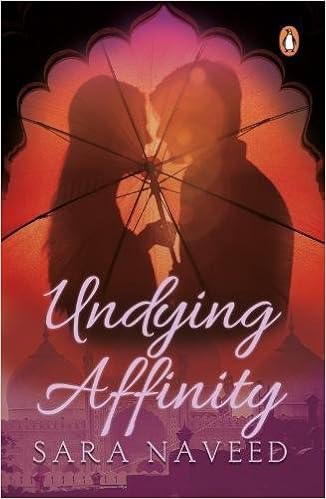
Rich, beautiful and popular Zarish Munawwar finds herself entangled in a web of passion with her attractive new professor, Ahmar Muraad, in this delicious new novel by the Pakistani queen of romance. Packed with romance, drama and tragedy, Undying Affinity will stay in your heart forever.
Reporting Pakistan by Meena Menon
Reporting from Pakistan is considered one of the more difficult-if exciting-assignments in journalism, more so for an Indian. Despite the limitations, Meena Menon, the Hindu’s correspondent in Islamabad until May 2014, has produced a probing, incisive portrait of a conflicted society; it is both nuanced and wide ranging and tries to look not just at politics-but also at the human realities beneath.
The Golden Legend by Nadeem Aslam
Against a background of violence and fear, the protagonists of The Golden Legend try to find an island of calm in which their love can grow. In his characteristically luminous prose, Nadeem Aslam reflects Pakistan’s past and present in a single mirror—a story of corruption, resilience and the hope that only love and the human spirit can offer.
Lahore in the Time of the Raj by Ian Talbot and Tahir Kamran
Lahore during the Raj was a prosperous and cosmopolitan place, where many communities lived together and there was a constant flow of goods, people and ideas. Talbot and Kamran bring to life the 1930s and 1940s, a time of intense cultural and political creativity where writers and artists flourished; where F.C. College and Government College were celebrated centers of learning and there was great engagement between Lahore and the nascent Bollywood film industry, unfortunately ended by the traumas of Partition.
Snuffing Out the Moon by Osama Siddique
2084 bce: In the great city of Mohenjodaro, along the banks of the Indus, a young man named Prkaa becomes increasingly mistrustful of the growing authority of a cult of priests.
2084 ce: A scholar revisits the known history of the cataclysmic events that led to world domination by ruthless international water conglomerates.
Spanning across epochs and civilizations, the characters in this stunning novel investigate the legitimacy of religion and authority and chronicle the ascent of dissent. Snuffing Out the Moon is a dazzling debut that is at once a cry for freedom and a call for resistance.
Military Inc.: Inside Pakistan’s Military Economy by Ayesha Siddiqa
Ayesha Siddiqa shows how the power of the military has transformed Pakistani society and where the armed forces have become an independent class. She examines this military economy and the consequences of merging the military and corporate sectors and analyses the internal and external dynamics of this gradual power-building and the impact that it is having on Pakistan’s political and economic development.
This House of Clay and Water by Faiqa Mansab
Set in Lahore, This House of Clay and Water explores the lives of two women: Nida, intelligent and lonely, has married into an affluent political family and is desperately searching for some meaning in her existence; and impulsive, lovely Sasha, from the ordinary middle-class, her longing for designer labels and upmarket places so frantic that she willingly consorts with rich men who can provide them. They meet at the famous Daata Sahib dargah and connect, their need to understand why their worlds feel so alien and empty, bringing them together. Faiqa Mansab’s accomplished and dazzling debut novel explores the themes of love, betrayal and loss in the complex, changing world of today’s Pakistan.
The Last Vicereine by Rhiannon Jenkins Tsang
Set amid the turmoil of Partition, The Last Vicereine is the heartbreaking story Edwina Mountbatten, a rebel, rule-breaker, troubled soul and great beauty, and Jawahar, her friend, confidant and the only one to truly understand her for who she was. It is also the incredible tale of the birth of two nations, of love, grief, tragedy, inhumanity and the triumph of hope.
Defeat is an Orphan: How Pakistan Lost the Great South Asian War by Myra Macdonald
This essential account by a former correspondent for Reuters and a South Asia specialist tracks the defining episodes in the relationship between India and Pakistan from 1998, from bitter conflict in the mountains to military confrontation in the plains, from the hijacking of an Indian airliner to the Mumbai attacks.
This Wide Night by Sarvat Hasin
In the quietly seething world of This Wide Night, The Virgins Suicides meets Little Women in Pakistan. Tracing the lives of the four beautiful Malik sisters, Maria, Ayesha, Leila and Beena in the 1970s, and moving from Karachi to London to the rain-drenched island of Manora, here is a compelling new novel from the subcontinent—and a powerful debut to watch.
Mr and Mrs Jinnah: The Marriage that Shook India by Sheela Reddy
Mohammad Ali Jinnah was forty years old, a successful barrister and a rising star in the nationalist movement when he fell in love with pretty, vivacious sixteen-year-old Ruttie Petit, the daughter of his good friend, the fabulously rich baronet, Sir Dinshaw Petit, a prominent Parsi mill owner. Despite her outraged father forbidding the match, they married when Ruttie turned eighteen and Bombay society, its riches and sophistication notwithstanding, was scandalized. A product of intensive and meticulous research in Delhi, Bombay and Karachi and based on first-person accounts and sources, Reddy brings to life the unforgettable love story of the solitary, misunderstood Jinnah and the lonely, wistful Ruttie.
Indus Divided: India, Pakistan and the River Basin Dispute by Daniel Haines
The Indus Waters Treaty is considered a key example of India–Pakistan cooperation, which had a critical influence on state-making in both countries. Indus Divided reveals the importance of the Indus Basin river system, and thus control over it, for Indian and Pakistani claims to sovereignty after South Asia’s partition in 1947, and examines the discord at local, national and international levels, arguing that we can only explain its significance and longevity in light of India and Pakistan’s state-building initiatives after independence.
Pakistan’s Nuclear Bomb: A Story of Defiance, Deterrence and Deviance by Hassan Abbas

This book provides a comprehensive account of the mysterious story of Pakistan’s attempt to develop nuclear weapons in the face of severe odds. Hassan Abbas profiles the politicians and scientists involved, and the role of China and Saudi Arabia in supporting Pakistan’s nuclear infrastructure. Abbas also unravels the motivations behind the Pakistani nuclear physicist Dr A.Q. Khan’s involvement in nuclear proliferation in Iran, Libya and North Korea, drawing on extensive interviews.
Remembering Partition: Limited Edition
The dawn of India’s freedom was stained by the Partition and its accompanying violence, which rent the subcontinent. Seventy years later, the nations that came into being are still to fully overcome a persistent sense of anger and loss. The five iconic books in this collection look at the different faces of Partition, from the larger political and historical view to the very personal tales of hatred, grief, courage and friendship. Together, they commemorate one of the most defining moments of our history whose reverberations are felt to this day.
Ice-Candy-Man by Bapsi Sidhwa
Young Lenny Sethi enjoys a happy, privileged life in Lahore in the 1940s. Kept out of school because she suffers from polio, she spends her days with Ayah, her beautiful nanny, who attracts several admirers. But with the abduction of her beloved Ayah, Lenny’s world soon erupts in racial and religious violence. Widely hailed as one of the most powerful novels on the Partition, Ice-Candy-Man offers an intimate glimpse into a colossal upheaval through the eyes of a precocious child.
In Freedom’s Shade by Anis Kidwai
In Freedom’s Shade is Anis Kidwai’s moving personal memoir of the first two years of new India. With a rare frankness, sympathy and depth of insight, Kidwai tells the stories of the thousands who were driven away from their homes in Delhi and its neighbouring areas by eviction or abduction or the threat of forced religious conversion. Recounting the activities of the Shanti Dal and the recovery of abducted women, she reveals both the architecture of the violence during Partition as well as the efforts of ordinary citizens to bring to a close the cycle of reprisal and retribution. This searching book is a reminder that memory without truth is futile; only when it serves the objective of reconciliation does it achieve meaning and significance.
The Great Partition by Yasmin Khan
The Partition of India in 1947 was one of the most horrific events of decolonization in the twentieth century, bringing death, rape and plunder in its wake. In The Great Partition, Yasmin Khan exposes the widespread ignorance of what the Partition would entail in practice as well as the haste and recklessness with which it was completed. Drawing on fresh information from an array of sources and underscoring the catastrophic human cost involved, Khan provides an authoritative and accessible analysis of this cataclysmic event and its devastating legacy.
Jhootha Sach by Yashpal
Jhootha Sach is arguably the most outstanding piece of Hindi literature written about the Partition. Vividly evoking life in Lahore as it was before 1947, the novel abounds with a rich array of characters whose lives unfurl dramatically in the city’s crowded streets: Tara, who wants an education, and not marriage; Puri, whose ideology and principles often come in the way of his impoverished circumstances; Asad, who is ready to sacrifice his love for the sake of communal harmony. Their destinies are irrevocably altered on the eve of Independence when the ensuing carnage shatters the beauty and peace of the land, killing millions of Hindus and Muslims, and forcing others to leave their homes forever.
Spectacular in scope and deeply insightful in its depiction of human frailty and malice, Yashpal’s controversial novel is a politically charged, powerful tale of human suffering.
Train to Pakistan by Khushwant Singh
The fact is both sides killed. Both shot and stabbed and speared and clubbed. Both tortured. Both raped.
It is the summer of 1947. But Partition does not mean much to the villagers of Mano Majra, a village on the border of India and Pakistan. Then, a local moneylender is murdered, and suspicion falls upon Juggut Singh, the village gangster who is in love with a Muslim girl. When a train arrives, carrying the bodies of dead Sikhs, the village is transformed into a battlefield and neither the magistrate nor the police is able to stem the rising tide of violence. Amidst conflicting loyalties, it is left to Juggut Singh to redeem himself and reclaim peace for his village.
So, which book are you going to pick?







